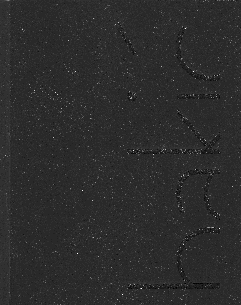Vojin Bakić (2008)
Filed under catalogue | Tags: · sculpture

This publication has been released on the occasion of the “Vojin Bakić” exhibition at the Grazer Kunstverein, curated by the Croatian collective WHW (What, How & for Whom) and Ana Bakić. Vojin Bakić (1915-1992) was a Yugoslav-Croat sculptor and architect. The book contains black-and-white illustrations and texts on the artist’s life and work by WHW and Milan Prelog, as well as an interview with Jerko Denegri on the work of Bakić.
Edited by What, How and for Whom/WHW
Publisher What, How and for Whom/WHW, Zagreb, and Grazer Kunstverein, Graz, 2008
61 pages
Kobro and Strzemiński: Avant-Garde Prototypes (2017) [English, Spanish]
Filed under catalogue | Tags: · avant-garde, constructivism, painting, sculpture

“Kataryna Kobro (1898-1951) and Władysław Strzemiński (1893-1952) are among the silent protagonists of the European avant-gardes, to which they contributed by both fostering and questioning the legacy of modernism with a plastic and theoretical oeuvre that was fertile as it was complex. Dedicated to experimentation on pure forms–Kobro fundamentally in sculpture and Strzemiński in painting–and closely related to international artistic movements like the Bauhaus, neoplasticism and constructivism, their work is pivotal for an understanding of abstract art in the Central Europe of the first decades of the twentieth century.”
With contributions by Jarosław Suchan, Christina Lodder, Gladys C. Fabre, Juan Manuel Bonet, and texts by Kobro and Strzemiński.
Publisher Museo Nacional Centro de Arte Reina Sofía, Madrid, and Muzeum Sztuki, Łódź, 2017
Creative Commons BY-NC-ND 4.0 International License
ISBN 9788480265508, 8480265507
192 pages
Exhibition (Madrid)
Exhibition (Łódź)
Publisher
WorldCat
Kobro and Strzemiński: Avant-Garde Prototypes (English, 13 MB, PDF, Issuu)
Kobro y Strzemiński. Prototipos vanguardistas (Spanish, 13 MB, PDF, Issuu)
Germano Celant: Art Povera (1969)
Filed under book | Tags: · art criticism, art history, arte povera, conceptual art, installation art, sculpture

Critical / photographic book documenting the “Art Povera / Arte Povera” movement. Includes short text followed by photographs for each artist: Walter de Maria, Michelangelo Pisteletto, Stephen Kaltenbach, Richard Long, Mario Merz, Douglas Huebler, Joseph Beuys, Eva Hesse, Michael Heizer, Ger van Elk, Lawrence Weiner, Luciano Fabro, Bruce Nauman, Joseph Kosuth, Jan Dibbets, Giovanni Anselmo, Robert Barry, Pier Paolo Calzolari, Dennis Oppenheim, Barry Flanagan, Robert Smithson, Giulio Paolini, Reiner Ruthenbeck, Alighiero Boetti, Giuseppe Penone, Franz Erhard Walther, Hans Haacke, Gilberto Zorio, Robert Morris, Marinus Boezem, Carl Andre, Emilio Prini, Richard Serra.
“This book does not aim at being an objective and general analysis of the phenomenon of art or life, but is rather an attempt to flank (both art and life) as accomplices of the changes and attitudes in the development of their daily becoming. This book does not attempt to be objective since the awareness of objectivity is false consciousness. The book, made up of photographs and written documents, bases its critical and editorial assumptions on the knowledge that criticism and iconographic documents give limited vision and partial perception of artistic work. The book, when it reproduces the documents of artistic work, refutes the linguistic mediation of photography. The book, even though it wants to avoid the logic of consumption, is a consumer’s item. … This book produces a collection of already old material. … In this book there is no need to reflect in order to seek a unitary and reassuring value, immediately refuted by the the authors themselves, rather there is the necessity to look into it for the changes, limits, precariousness and instability of artistic work.” (from Celant’s introduction “Stating That.”)
First published in Italian by Gabriele Mazzotta Publishers, Milan, 1969.
Publisher Praeger Publishers, New York, 1969
240 pages
Review: John Moffitt (Art J, 1970).
PDF (86 MB, no OCR)
Internet Archive (added on 2023-7-7)

